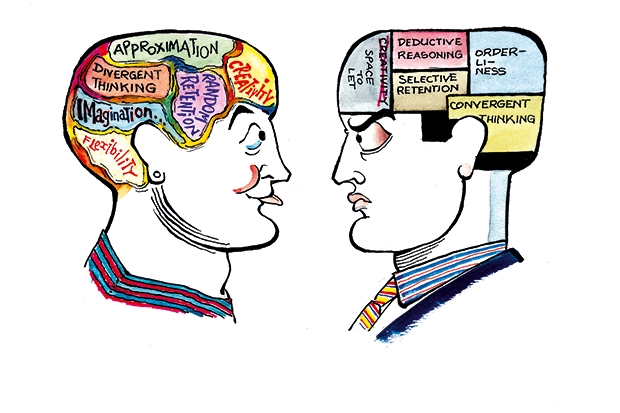Why on earth did you do it?’ must be one of the most frequently posed questions to teenagers. The bright, ambitious boy standing before me is perplexed: prompted by a video clip online, he has liberally sprayed aerosol on his torso and then set fire to himself. There is a pause, then, ‘It seemed like a good idea at the time.’
In matters trivial, dramatic or, in this case, painful, teenagers seem to behave in bizarre ways. It is tempting for parents to believe that once our children reach adolescence somehow the huge gulf between childhood and adulthood has been bridged. We tend to believe that we are dealing with an individual who, although perhaps physically still undergoing some development, has a mature brain; lacking a little experience perhaps, but nothing that a sound secondary education cannot provide. In fact, nothing could be further from the truth. There are huge differences in the way that the adult and adolescent brains operate. Indeed, a teenager appearing to behave like a lunatic may just be a normal adolescent. At times it can seem as though this evolutionary process has been designed to cause maximum frustration to parents, yet such processes have been carefully selected to ensure a successful outcome for the child — and, though it can sometimes be hard to believe, also for the parent.
In the past 15 years there has been a dramatic increase in the neurobiological evidence available to support psychological investigation. In particular, a wealth of data is being produced by magnetic resonance scans, which throw light not only upon the structural transformations in the brain but also, by monitoring blood flow in the brain, on which regions are active when particular tasks are being performed. It illustrates the connections that are being established between discrete regions of the brain.
The picture that emerges from these investigations is of a strong motor driving adolescents’ behaviour, but one which is only loosely integrated with those higher functions that allow subtle differentiation about the appropriate action to take. The engine is powering away, but the selection of gears and indicators and use of the brake can appear random. It is a picture complicated by the fact that each person develops in a different way — there is no model route. Neuroscientists are now making significant progress in identifying the networks involved in cognitive control and are beginning to develop strategies to highlight the social experience young people need in order to have a stable, integrated, balanced approach to situations. What is clear, however, is that it is absolutely essential to allow adolescents to make mistakes, and to allow them to do so in a safe environment which enables them to get things wrong and learn.
Adults need to learn, too. The default mode of adults is to talk at young people in the belief that imparting wisdom is at the heart of the educational process. We adults can learn much more by discussing what we do not know. Time spent listening to teenage children is time well spent. Both teacher and parent may learn many things that they did not know, and perhaps did not wish to know, but a platform for dialogue is established.
A growing awareness of the developmental process of adolescence has implications for the way we teach and this is increasingly understood. Some of the neuroscience simply underscores the received wisdom of traditional good teaching — dealing with one issue at a time with adolescent boys, for example. Rather more of the science shows how much we have to learn about the way adolescents think and react. In a decade we may well look back in wonder at our limited and inept understanding of this crucial and exciting period of human development.
There are also serious implications for the way we think about schooling. Throughout my time in teaching, I have often been amazed by the creativity and flexibility of the adolescent mind. It is one of the joys of being a teacher. Unshackled by adult preoccupations, the adolescent mind can turn on a sixpence and see things in different ways. Yet our conventional world of education stifles this creativity. Our apparent reverence for deductive reasoning, convergent thinking and selective retention perversely excludes divergent thinking, approximation and, importantly, guessing. In a culture in which measuring the measurable is seen by some as the be-all and end-all of education, we are encircling our young people with limitations.
If we seek thoroughly to understand the process of adolescent development, engage with it and celebrate it, we will be better able to help our children navigate a complex world and also minimise the effects of the risk-taking behaviour that is necessary in order for them to help shape their adult lives. And we would release the energy, creativity and spontaneity that is so characteristic of the adolescent mind.
Tony Little was headmaster of Eton College from 2002 until this year. His book An Intelligent Person’s Guide to Education is out now.






Comments